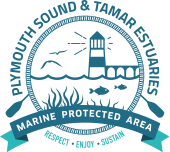Going to the beach is a great way to enjoy the Plymouth Sound & Tamar Estuaries Marine Protected Area, with fantastic views, beautiful wildlife and an endless number ways to have fun in, on and by the water. There are things you can do during your visit that can help us to protect and conserve this unique and special place – please remember to take your rubbish away with you and be respectful of marine life that make the coast their home. You could even do a mini beach clean whilst you’re there to help preserve our coastline for generations to come!
BEACHES AROUND THE MPA
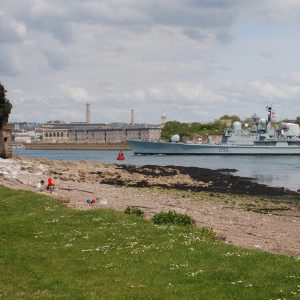
Barn Pool Beach
Located on the Mount Edgcumbe Estate, Barn Pool Beach is a stony seashore surrounded by beautiful gardens and vast greenspace. The beach offers stunning views of Plymouth including the Hoe, Fort William and Drake’s Island. With close parking (pay and display), nearby facilities and ferry links, this is a wonderful place to visit and enjoy the MPA.
Take care when swimming at Barn Pool Beach as it is a popular spot for boats and they may not see you in the water.
Great for: paddling, walking, picnics and family days out.
Batten Bay
A small beach below Mountbatten Point; this beach has fantastic views across the Plymouth Sound and Drake’s Island. A mix of sand and shingle, the beach is close to a free car park. You can take a short ferry ride from the Barbican to the Mountbatten landing stage, which is then just a 5-10 minute walk to the beach.
Dogs are allowed on this beach all year. There are steps down to the beach.
Great for: snorkelling (at high tide) and rock pooling (at low tide).
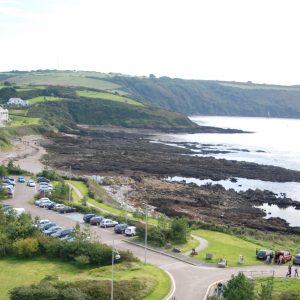
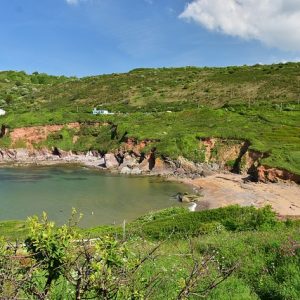
Bovisand
Situated on the East side of the Plymouth Sound, and part of the South Devon Area of Outstanding Natural Beauty, Bovisand Beach is popular locals and visitors alike. At low-tide, it’s large area of sand is perfect for ball games and sandcastles, whilst at high tide, the bay provides shelter to swimmers and snorkelers keen to get into the water. Walkers can take the South West Coast Path from here – north to Plymouth, or south to Wembury, taking in Heywood Bay along the way. There is a designated swimming area in place where you see the yellow marker buoys.
There are no dogs allowed on the beach from 1 May – 30 September.
Great for: swimming, snorkelling and beach games.
Cawsand/Kingsand
The beaches of Cawsand and Kingsand are based in South East Cornwall. These beautiful seashores are south-east facing and are made up of sand and shingle, with fantastic views across the Plymouth MPA.
Dogs are allowed on this beach all year. Beach is accessible via slopes and steps. There is a large area of seagrass in Cawsand Bay, so please avoid anchoring in that area to help preserve this important marine habitat. When swimming and snorkelling, take extra care as this is a popular area for visiting boats.
Great for: paddle sports, swimming, snorkelling and coastal walking.
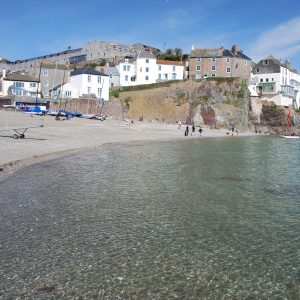
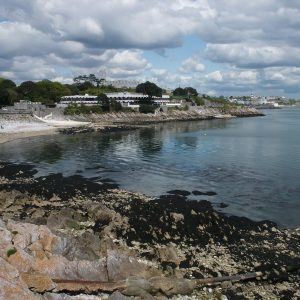
Devil’s Point/Firestone Bay
The beach at Firestone Bay is a small pebble beach which supplies astounding views of the Stonehouse peninsula, Mount Edgcumbe, the Plymouth Sound and Drake’s Island. The area around Firestone Bay is great for swimming, diving and snorkelling, with lots of interesting marine life to see – but stay safe as there some are very strong currents around Devil’s Point.
Free car parking nearby and designated swimming area within the yellow marker buoys.
Great for: diving, snorkelling and swimming.
Jennycliff Bay
A small pebble beach, tucked just inside the South Devon Area of Outstanding Natural Beauty (AONB) and on the South West Coast Path. This seashore has plenty of rock pools and spaces for picnics and beach games, ideal for family days out. Jennycliff Bay also has wonderful views across the Plymouth Sound.
Dogs are allowed on this beach all year, and there is free car parking nearby. Please be aware that to access the beach, there is a steep path.
Great for: rock pooling, snorkelling, beach games and family days out.
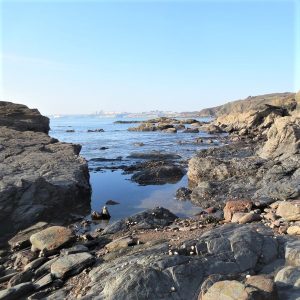
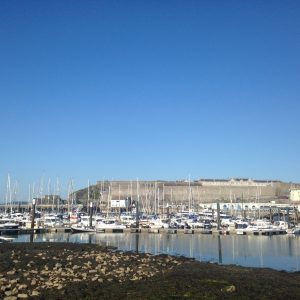
Teats Hill
Teats Hill is an urban beach, situated next to the National Marine Aquarium, with beautiful views over Queen Anne’s Battery marina and the citadel. Adjacent to the beach is a large play area, outdoor gym, an amphitheatre and benches, perfect for a picnic.
We wouldn’t recommend using the slipway for access to the water as it is in poor condition. If you’re accessing the water with paddle craft please be sure to watch out for nearby passing traffic. The site has limited parking nearby.
Great for: paddle craft, family days out, picnics and dog walking.
Wembury Bay
The beach at Wembury Bay is predominantly sandy above the tide line, with a rocky foreshore and amazing biodiversity in the intertidal area, making it an ideal spot for rockpooling. With great views of the Mewstone, this beach is also fantastic for water activities such as surfing, kayaking, snorkelling, and diving. Wembury sits on the South West Coast Path, and the nearby Wembury Marine Centre (run by Devon Wildlife Trust), there is plenty to do.
The nearest parking is the National Trust car park near the Marine Centre, but there is limited free parking and Wembury Point.
Please help protect Wembury’s special wildlife for everyone’s future, follow the Wembury Marine Conservation Area Code of Conduct when visiting this area.
Great for: water sports, family days out, walking and rock pooling.
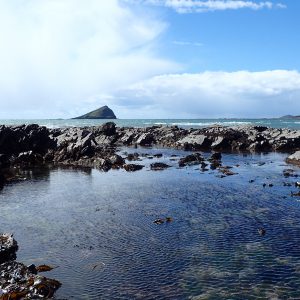
This MPA mini drama, from Natural England, was filmed in Wembury Bay – have a look at what you might find in the shallows during your visit!
PLACES TO VISIT AROUND THE MPA
There are lots of great places around the MPA for you to explore and enjoy. Get up close with the marine life at the National Marine Aquarium, go rockpooling at Wembury, hike beautiful trails along the coast, stop for lunch in tranquil villages or explore the picturesque rivers and estuaries by boat.
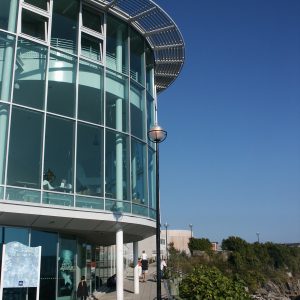
National Marine Aquarium
If you want to get a closer look at what lives in the Marine Protected Area, head to the National Marine Aquarium, opposite the Barbican – the largest aquarium in the UK. The team at the NMA look after over 4,000 marine animals, including some of the amazing creatures that can be found around the Plymouth Sound and the Eddystone. They also have Lemon Sharks, Grey Reef Sharks, Eagle Rays, and a Green Turtle called Friday.
River Yealm
The tidal stretches of the River Yealm is a peaceful, tree-lined estuary with amazing views. It is variously designated as a Site of Special Scientific Interest (SSSI), a Special Area of Conservation (SAC)and wholly within an Area of Outstanding Natural Beauty (AONB). Visit the Yealm Estuary for access to fantastic wildlife and adjacent villages, such as Noss Mayo. An ideal location for boat users, but please be particularly careful if anchoring in the entrance as there are large areas of seagrass whose communities are easily damaged.
For more information about entering the Estuary by boat, please consult the River Yealm Harbour Authority website.
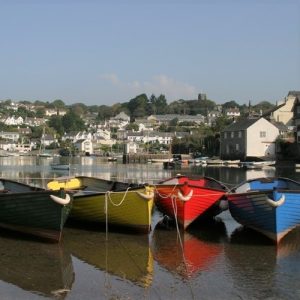
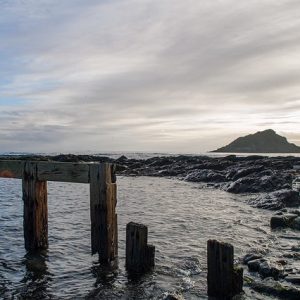
South Devon AONB
Designated in 1960, the South Devon Area of Outstanding Natural Beauty (AOBN) covers 337 square kilometres of estuaries, coastline and terrestrial land, overlapping our Marine Protected Area from Jennycliff across to the Yealm Estuary. The AONB is a great place to visit. Go on one of the over 40 coastal walk to take in the stunning views, enjoy the spectacle of large numbers of wading bird on the mudflats of the Yealm Estuary, and why not stop off at Noss Mayo for a spot of lunch.
Tamar Valley AONB
The Tamar Valley Area of Outstanding Natural Beauty (AONB) is a stunning expanse, that includes the Rivers Lynher, Tamar and Tavy. Perfect for walking, hiking and catching glimpses of local wildlife, the valley provides the perfect place to go exploring. The village of Calstock is a perfect stop for lunch, and with National Trust’s Cotehele house and gardens just further down river, there is lots to do in this AONB.
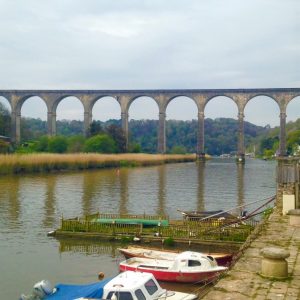
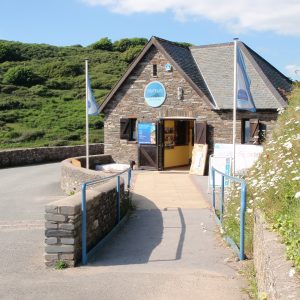
Wembury Marine Centre
A fantastic way to learn more about marine life and discover the diverse and colourful neighbours that make the MPA their home. The Wembury Marine Centre, managed by Devon Wildlife Trust, offers regular events such as rockpool and snorkel safaris, as well as interactive displays and information about the local marine environment. Located next to the beach (and the National Trust car park) at Wembury Bay, the Team do lots of great work advocating local marine conservation and have lots of marine knowledge to share.
This MPA mini drama, from Natural England, was filmed in Wembury Bay – have a look at what you might find in the shallows during your visit!
Visit Plymouth
Britain’s Ocean City
There is loads to see in Plymouth, both by the water and on land. For more information on places to visit and upcoming events, visit the Visit Plymouth’s website.
